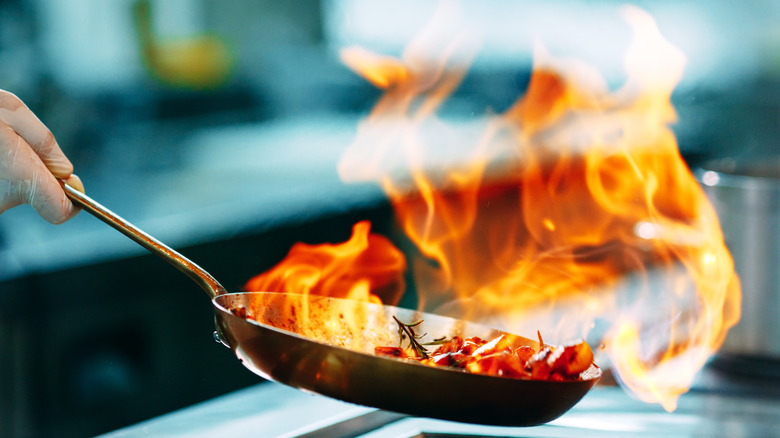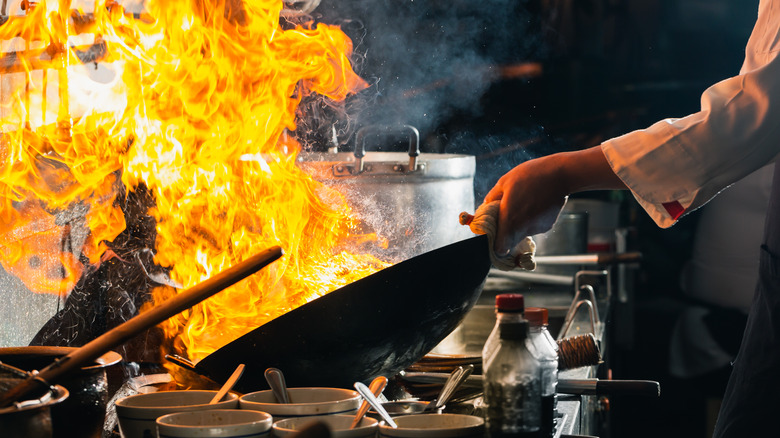The Real Reason Restaurant Pans Sometimes Catch On Fire
When chefs make something like flambé, they set their pans on fire on purpose. However, sometimes kitchen flare-ups, what the pan fires are called, happen by accident. While two-thirds of home cooks think they can handle the heat of a restaurant's kitchen, a pan fire is luckily hard to replicate in a home kitchen, thanks in part to the lower BTU output on home stoves, as well as the different cooking methods employed in commercial kitchens.
Remodelista explains that BTUs (or British Thermal Units) are a measurement of heat output for stoves. Because restaurants need to cook for large numbers of people, and they need to do so quickly and efficiently, the burners on cooktops for commercial kitchens spit out 25,000 to 35,000 BTUs of heat, compared to the 12,000 BTUs of a home range (via Mission Restaurant Supply).
But it's more than just the BTUs that can ignite a pan; it's also the way pro-cooks heat them.
Why pan flare-ups happen in restaurant kitchens
Reluctant Gourmet recounts the typical steps home cooks take when heating pans — adding oil to a cold pan, followed by heating the oil and pan at the same time. However, in commercial kitchens, the oil is add to the pans after they're heated. Part of the reason is speed. Oil heats immediately when it comes into contact with a hot pan, which means faster cooking (via Science of Cooking).
Good Cook Guide explains stainless steel pans have pores, and when the pans are cold, those pores are open. Heating the pan closes the pores, so the oil sits on top of the pan, rather than spreading into the gaps, which keeps the food from sticking. (Worth noting, never use the pre-heat method on non-stick pans; only use with stainless steel.) According to Taste of Home, flare-ups happen because these pre-heated pans are super-hot. However, they still need something combustible to catch fire, like grease or oil. It's when the oil's temperature climbs past its smoke point — easy to do with such a hot pan — that it ignites (via Chef FAQ).
While rare, flare-ups can happen at home. Bob Vila points out that under high enough heat, smoke can turn into a fire in 30 seconds. If this happens, the home improvement site recommends turning off the stove and throwing baking soda or salt directly on top of the flames — not from the side — to extinguish.

